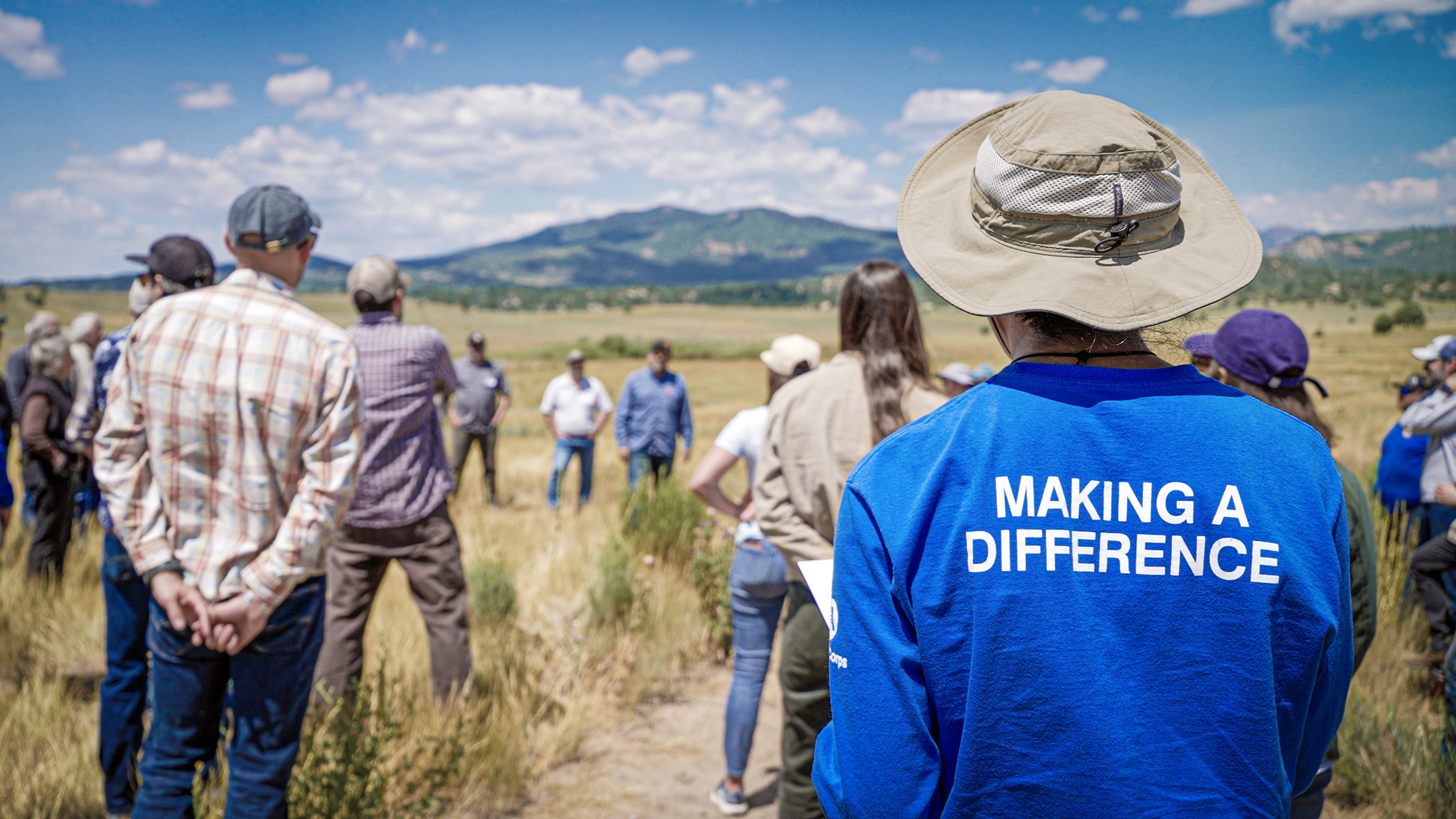Preparing to Partner
Partnerships are at the heart of how the Forest Service accomplishes its mission to sustain the health, diversity, and productivity of the nation's forests and grasslands to meet the needs of present and future generations. The agency partners with non-profit and for-profit entities; rural, urban, and tribal communities; universities and minority-serving institutions; land management agencies, and more.
If partners intend to plan any projects together or to exchange any resources or funding, they must formalize this relationship through a written agreement. The Forest Service and its partners negotiate and write these agreements together. The steps below can help you prepare for a partnership with the agency.
If a partnership agreement doesn’t sound right for your organization, please see our other funding opportunities.

SAM.gov: All entities wanting to enter into an agreement with the Forest Service must have an active profile on SAM.gov. For tips on registering, please see SAM.gov.
Mutual benefit: Federal policy defines partnerships as “arrangements that are voluntary, mutually beneficial and entered into for the purpose of mutually agreed upon objectives.” In this definition, “mutual benefit” specifically means that each partner shares in the benefits the projects provide.
Match: Most partnership agreements require partner match. Match can be generated from one or more of the following contributions:
Cash contributions
Program income
Non-cash contributions. A cost incurred towards the completion of a project within an agreement other than a direct transfer of funds between the parties. Non-cash contributions may include services, supplies, materials, and real and personal property.
In-kind contributions. Non-cash contributions to an agreement that do not represent a cash expense to the cooperator. In-kind contributions include volunteer labor as well as donated equipment and materials.
Partnerships are crucial to achieving an array of projects both on and off Forest Service land. Projects can range from research to job training to restoration and timber salvage. Non-binding agreements, like a Memorandum of Understanding, can document a framework of cooperation without committing to any obligations.
The following is a list of partnership agreement types and the work that can be accomplished through each.
| Definition | Possible Cooperators | Possible Projects | |
|---|---|---|---|
| Challenge Cost Share Agreement | A type of partnership agreement that enables the Forest Service to work with partners to develop, plan, and implement mutually beneficial projects that enhance Forest Service activities. | Public and private agencies, organizations, institutions, and/or individuals. | Broad variety, including trail maintenance and recreation. |
| Participating Agreement | A type of partnership agreement that enables the Forest Service and its partners to cooperatively perform work from which they accrue non-monetary mutual benefit. Activities take place off Forest Service lands but must provide a benefit to natural or cultural resources on Forest Service lands in the same watershed. | Willing landowners; state, local or Tribal governments or other entities; educational institutions; and private or non-profit organizations. | Pollution abatement; job training and development programs; development and sales of interpretive and educational materials; forestry protection; fish and wildlife habitat enhancement; and natural disaster risk. |
| Memorandum of Understanding (MOU) | An agreement that documents a framework for cooperation between the Forest Service and partners for carrying out their separate activities in a coordinated and mutually beneficial manner. Each party must use its own resources. Nothing of value may transfer between them. | Any Federal or non-Federal cooperator. | Any activity within the Forest Service mission. |
| Stewardship Agreement | A type of partnership agreement that enables the Forest Service to work with partners on activities that both achieve land management goals on National Forest System lands and meet local and rural community needs. | Any entity with the ability to either perform the work or contract it out, including Tribes, non-profit organizations, and for-profit entities. | Timber salvage, noxious weed control, removing timber to promote healthy forests or reduce fire hazards, and setting prescribed fires. |
| Joint Venture | A type of partnership agreement that enables Forest Service research units to cooperatively perform agricultural research and teaching activities of mutual interest with other parties. | Any entity for research activities. Must partner with colleges or universities that offer baccalaureate or higher degrees for agricultural teaching activities. | Agricultural research, formal classroom instruction, lab instruction, development of curriculum and instructional. |
If you’re interested in partnering with a specific Forest or Grassland, please find their contact information.
If you’re interested in national-level partnership opportunities, please reach out to the National Partnership Office.
If you’re interested in corporate partnership opportunities, please see the National Forest Foundation’s corporate partnership website.
For further information to help understand the Forest Service, collaboration best practices, and partnership evaluation, visit our Partnerships 101 page.
